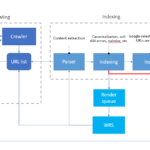The Power of Partner Workouts: Why Exercising Together Creates Stronger Bodies, Better Habits & Deeper Bonds
Author: Preeti Chaudhary, Fitness & Nutrition Coach
Partner workouts are no longer just a fitness trend—they are a proven, enjoyable, and effective way to make exercise consistent and meaningful. When two people train together, they share motivation, support, responsibility, and emotional connection, turning fitness into a lifestyle rather than a struggle.
This detailed article explains every section, so readers can understand exactly why partner workouts work and how to make them part of daily life.
What Are Partner Workouts?
Partner workouts involve doing exercises with another person, where both people actively participate—either by performing movements together, supporting each other, or motivating each other.
Explanation:
This section clarifies the concept. Partner workouts aren’t just doing the same exercise at the same time. They include:
- Mirrored exercises (both doing the same movement facing each other)
- Assisted exercises (one supports the other)
- Resistance-based drills (using bands, bodyweight, or tension)
- Motivational pairing (where one rests while the other works)
- Outdoor activities like walking, jogging, hiking together
It sets the foundation for understanding how versatile and adaptable partner workouts truly are.
Why Partner Workouts Are So Effective
This section explains the science, psychology, and emotional factors that make partner workouts better than solo sessions.
1. Built-In Accountability: Why You Show Up More Consistently
When someone is depending on you, you automatically feel responsible. This increases your commitment and reduces excuses.
Explanation:
This section highlights the biggest benefit—consistency.
People often skip workouts due to laziness, tiredness, or lack of motivation. But when:
- A partner is waiting
- The workout is pre-planned
- You don’t want to disappoint someone
- The routine becomes shared
…your discipline improves instantly.
This is a psychological phenomenon called social accountability, and it is proven to improve long-term adherence.
2. Quality Time in a Busy Life
Partner workouts create a shared space for connection and communication while also improving health.
Explanation:
Life is fast. People often struggle to spend meaningful time with loved ones.
Partner workouts solve this problem by combining:
- Fitness
- Connection
- Conversation
- Stress relief
- Shared effort
You get time together, without sacrificing health or productivity.
This is especially helpful for:
- Couples
- Friends
- Siblings
- Work colleagues who want active breaks
It turns fitness into a bonding activity.
3. Stronger Emotional Bond & Shared Motivation
Exercise releases endorphins — feel-good hormones. Sharing this high-energy space strengthens emotional connections.
Explanation:
This section focuses on mental and emotional benefits.
When you work out together:
- You feel happier
- You reduce stress
- You motivate each other
- You feel supported
- You celebrate progress together
For couples, this increases relationship satisfaction.
For friends and family, it builds trust and closeness.
It’s not only physical — it’s emotional growth.
4. Healthier Lifestyle as a Team
When two people commit to fitness, healthy habits automatically strengthen.
Explanation:
This section dives into lifestyle transformation.
A single person trying to eat clean struggles because the environment isn’t supportive.
But when both people are aligned:
- Meals become healthier
- Sleep improves
- Junk cravings reduce
- Daily movement increases
- Household routine becomes organised
- Motivation becomes mutual
Fitness becomes a shared culture, not an individual battle.
5. Better Communication & Trust Building
Partner exercises require timing, coordination, and verbal clarity.
Explanation:
This section explains how partner workouts improve interpersonal skills.
Movements like:
- Partner stretches
- Resistance band pulls
- Medicine ball throws
- Spotting in strength training
…teach communication and trust.
Both people must:
- Listen
- Respond
- Support
- Synchronize movements
This develops patience and understanding — qualities that benefit relationships, friendships, and teamwork.
6. More Fun, Less Stress
Training with a partner turns workouts into enjoyable experiences instead of boring routines.
Explanation:
This section highlights how partner workouts increase fun.
Laughter, challenges, games, and positive energy reduce cortisol (stress hormone).
When a workout becomes enjoyable:
- You stay motivated
- You look forward to training
- You learn faster
- You stick to the routine
People quit boring workouts — but they rarely quit fun ones.
7. Faster Progress & Better Fitness Results
Partners encourage each other to push harder and stay focused, leading to better physical transformation.
Explanation:
This section explains results-based benefits.
When you have a partner:
- You increase intensity
- You complete more reps
- You maintain proper form
- You celebrate milestones
- You stay consistent
This leads to:
- Better fat loss
- Increased muscle tone
- Improved stamina
- Higher strength
- Faster progress overall
It turns fitness into a shared victory.
Types of Partner Workouts You Can Do
This entire section explains the different categories of partner workouts and why each category matters.
A. Strength Training Partner Exercises
These exercises build muscle and improve strength.
Explanation:
Strength work becomes easier when:
- A partner assists
- You maintain form better
- You feel supported
- You push harder
Examples:
- Partner squats
- Band rows
- Assisted push-ups
- Medicine ball throws
These exercises improve both muscle development and coordination.
B. HIIT & Conditioning Workouts
High-intensity training improves:
- Fat loss
- Heart health
- Endurance
Explanation:
Partner HIIT is more motivating because of:
- Equal work-rest ratios
- Mini-competitions
- Shared challenges
- Dynamic movements
Examples:
- Plank taps
- Burpee high-fives
- Partner sprints
- Jump squat challenges
This section explains how shared intensity builds stamina and burns more calories.
C. Mobility & Stretching Partner Drills
Partners can safely deepen stretches and support each other.
Explanation:
Mobility requires slow, controlled movements. Partner assistance helps:
- Increase flexibility
- Prevent injury
- Improve posture
- Support alignment
Examples:
- Hamstring stretch assist
- Chest opener
- Back-to-back twists
This section shows how partners can improve recovery and reduce stiffness.
D. Outdoor Partner Activities
These are low-pressure, enjoyable, and perfect for beginners.
Explanation:
Outdoor partner workouts create fresh air, relaxation, and stress relief.
Examples:
- Evening walks
- Cycling
- Hiking
- Jogging
- Swimming
These activities improve mood and cardiovascular health while keeping the routine simple.
How to Start Partner Workouts Successfully
This section gives practical tips for beginners.
1. Set Shared Goals
Explanation:
Both partners must agree on the purpose — fat loss, muscle gain, health, or routine building.
2. Match Your Pace
Explanation:
Fitness levels may differ, but workouts can be adjusted.
Matching pace prevents burnout or discouragement.
3. Start Simple
Explanation:
Begin with easy exercises to avoid injury and build confidence.
4. Celebrate Progress
Explanation:
Small wins build momentum. Celebrate:
- Consistency
- Strength gains
- Daily steps
- Routine milestones
5. Keep It Fun
Explanation:
Workouts should not feel like pressure.
Fun = sustainability.
Conclusion: Fitness Is Better Together
This final section summarizes the entire message:
Partner workouts create:
- Stronger bodies
- Stronger bonds
- Better communication
- Healthier habits
- Faster results
- A joyful fitness journey
Training together is not just exercise — it’s a shared life upgrade.
Move together. Grow together. Stay connected. Stay fit. ❤️💪
Author: Preeti Chaudhary
FAQs: Partner Workouts
1. What are partner workouts?
Partner workouts are exercises performed with another person—such as a spouse, friend, or workout buddy—where both individuals support, motivate, and challenge each other. These workouts include strength training, HIIT circuits, stretching, and outdoor activities designed to improve fitness and build connection.
2. Are partner workouts better than solo workouts?
Yes, partner workouts can be more effective because they provide built-in accountability, emotional support, increased motivation, and improved consistency. Research shows people are far more likely to stick to a routine when training with a partner.
3. Who can do partner workouts?
Anyone—beginners, couples, friends, siblings, and even older adults. Partner workouts can be adapted to all fitness levels and require little to no equipment, making them accessible for everyone.
4. What are the benefits of partner workouts?
Partner workouts improve consistency, build emotional connection, reduce stress, encourage healthier lifestyle habits, enhance communication, and deliver faster physical results. They make fitness enjoyable and sustainable.
5. Do partner workouts help with weight loss?
Absolutely. Training with a partner increases intensity, encourages accountability, and keeps you consistent—all of which support effective fat loss. Shared goals make it easier to stay on track with workouts and nutrition.
6. What exercises can I do with a workout partner?
You can do strength exercises (squats, push-ups, resistance band rows), HIIT exercises (burpee high-fives, plank taps), stretching drills (hamstring assists, back-to-back twists), and outdoor activities like walking, jogging, hiking, or cycling.
7. Can partner workouts help improve relationships?
Yes. Exercising together boosts endorphins and creates positive shared experiences. It strengthens communication, trust, emotional bonding, and teamwork—benefits that extend outside the workout.
8. Do I need equipment for partner workouts?
Most partner workouts require no equipment at all. You can use just bodyweight. Optional tools—like resistance bands, medicine balls, or dumbbells—can add variety but are not necessary.
9. How often should partners work out together?
Ideally 3–5 times a week, depending on fitness levels and goals. Even simple activities like daily walks or 20-minute home workouts count as effective partner sessions.
10. Can partners with different fitness levels train together?
Yes. Partner workouts can be easily modified. One person can perform a harder variation while the other chooses an easier alternative. The goal is teamwork—not competition.
11. How do partner workouts reduce stress?
Training together increases serotonin and dopamine while lowering cortisol (stress hormone). The shared laughter, support, and energy create a positive environment that naturally reduces daily stress.
12. Are partner workouts suitable for beginners?
Absolutely. Beginners may find them especially helpful because a partner provides guidance, motivation, and emotional support. Starting slow and choosing simple movements is recommended.
13. Can partner workouts be done at home?
Yes, many partner exercises are designed specifically for home—no gym required. Bodyweight squats, planks, push-pull exercises, and stretching routines can all be done in limited space.
14. What is the best partner workout for couples?
Couples often enjoy mirrored exercises, resistance band drills, plank high-fives, partner yoga, and evening walks. These routines strengthen physical health and emotional connection simultaneously.
15. Do partner workouts improve communication?
Yes. Many exercises require coordination, verbal cues, and teamwork. This naturally builds patience, trust, and understanding—skills that improve communication in any relationship.









